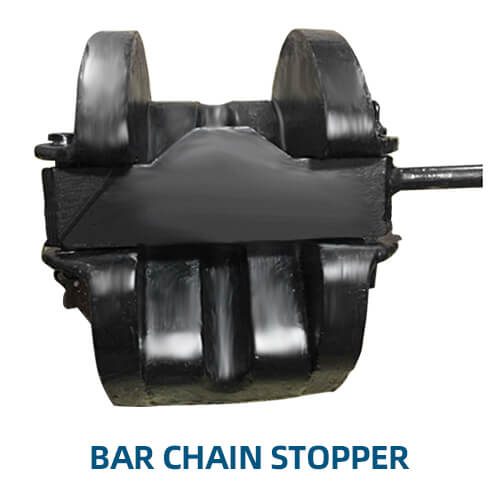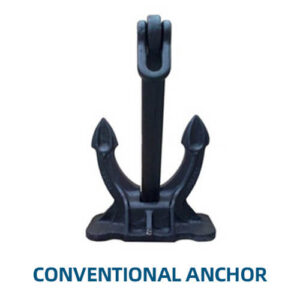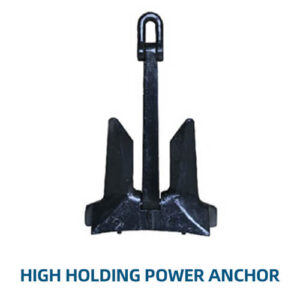Key Features of Bar Chain Stoppers:
- Design and Construction:
- Bar Mechanism: Consists of one or more horizontal bars or jaws that grip the chain. The bars are designed to apply pressure to the chain to prevent it from slipping or moving.
- Material: Constructed from robust, corrosion-resistant materials such as stainless steel, cast iron, or high-strength alloys. These materials are chosen for their durability and ability to withstand harsh marine environments.
- Mounting: Typically mounted on the deck of a ship or marine structure. The base is designed for secure attachment, often bolted or welded in place.
- Types:
- Manual Bar Chain Stopper: Operated manually, requiring the operator to engage or disengage the stopper by hand. This type is suitable for applications where automated control is not required.
- Automatic Bar Chain Stopper: Includes an automated mechanism for engaging or disengaging the stopper. This type provides convenience and is particularly useful in high-traffic or automated systems.
- Applications:
- Anchor Chain Management: Used to secure the anchor chain when the vessel is at anchor. The bar mechanism holds the chain in place, providing stability and preventing unwanted movement.
- Mooring Operations: Employed during mooring operations to manage and secure the chain. It helps ensure that the chain does not slip or move during the mooring process.
- Marine and Offshore Platforms: Used on floating platforms, oil rigs, and other offshore structures to manage heavy chains associated with anchoring or mooring systems.
- Performance and Benefits:
- Secure Holding: The bar mechanism provides a strong grip on the chain, ensuring that it remains securely in place.
- Durability: Built from high-quality materials designed to handle heavy loads and withstand harsh marine conditions, including saltwater, UV rays, and physical wear.
- Simple Operation: The manual or automatic mechanisms are designed to be straightforward and reliable, making them easy to operate and maintain.
- Maintenance and Care:
- Inspection: Regularly inspect the bar chain stopper for signs of wear, corrosion, or damage. Check the bars for proper alignment and functionality.
- Cleaning: Clean the stopper to remove marine growth, debris, and contaminants. Use appropriate cleaning agents and techniques to avoid damaging the material.
- Lubrication: Ensure that any moving parts or mechanisms are properly lubricated to maintain smooth operation and prevent seizing or binding.
- Safety Considerations:
- Load Capacity: Ensure the bar chain stopper is rated for the specific loads and sizes of chains it will handle. Overloading can lead to damage or failure.
- Proper Installation: Ensure the stopper is securely mounted and aligned to provide effective guidance and holding for the chain.
- Chain Management: Use appropriate chain sizes and types for the stopper to ensure proper fit and performance. Avoid overloading individual components.
Advantages of Bar Chain Stoppers:
- Strong Grip: The bar mechanism provides a reliable and strong grip on the chain, ensuring secure holding.
- Durability: Constructed from high-quality materials to handle heavy loads and withstand challenging marine conditions.
- Simplicity: Offers a straightforward design that is easy to operate and maintain.
Considerations for Bar Chain Stoppers:
- Selection: Choose the appropriate size, type, and load rating based on the specific requirements of the chain and the application.
- Maintenance: Regularly inspect and maintain the stopper, including lubricating any moving parts, to ensure continued functionality and safety.
- Compliance: Follow relevant industry standards and regulations for the design, installation, and maintenance of bar chain stoppers to ensure safety and performance.
Bar chain stoppers are essential components for managing and securing anchor and mooring chains in marine environments. Their design ensures reliable holding and durability, making them valuable for anchoring and mooring systems.






